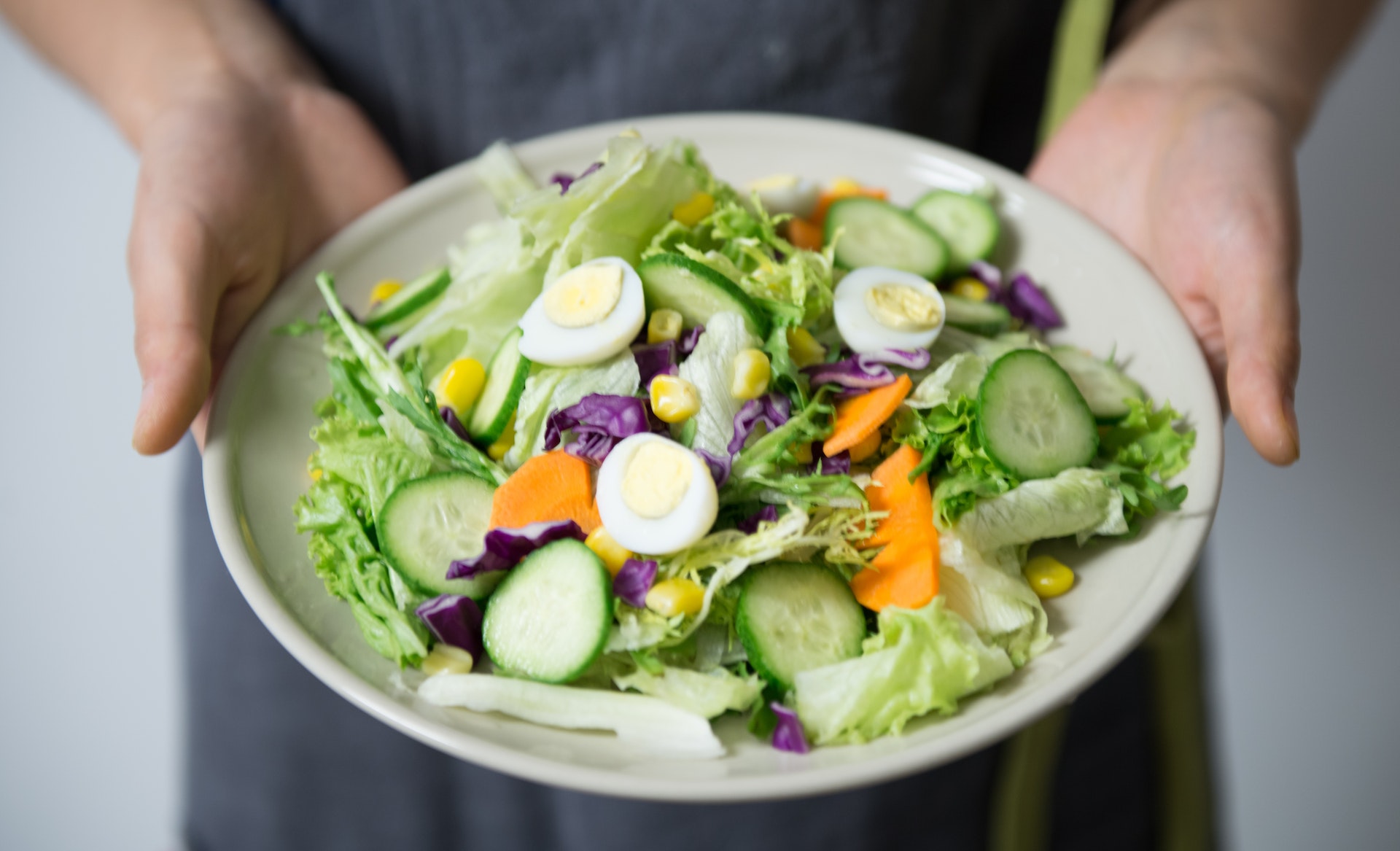Although arguably the biggest food news of the past year was the rising cost of groceries, which will no doubt continue to have an impact as we head into 2023, there have also been advances in plant-based products, reducing food waste, and functional foods and drinks that may give everyone something to look forward to in the new year.
This could be the year we finally see ethical, lab-grown meat on the market and get a decent vegan fish sandwich. To discuss those and other emerging trends, we consulted Bonnie Taub-Dix, RDN, New York City–based author of Read It Before You Eat It: Taking You from Label to Table, and Kelly Kennedy, RDN, staff dietitian for Everyday Health. Here, they share their thoughts on the most important healthy food trends we’re likely to see in 2023.

1. Economical Eats
While food prices won’t grow at the staggering rate they did in 2022 — which was as much as 12 percent — they will continue to rise above historical average rates, according to data from the U.S. Department of Agriculture (USDA). That means more people saving money by preparing their own meals at home, given that eating out costs more than 3 times as much, on average, according to The NPD Group, a market research firm.
It also means looking for ways to save on groceries. “A lot of people, especially people with larger families, are going to have to look for affordable options in order to stay on budget,” says Kennedy. “I definitely think people are going to be watching where they place their food dollars more closely.” Inexpensive protein sources, like tinned fish and canned beans and legumes, could become more popular, while more expensive cuts of meat might take a back seat.
2. More Plant-Based Options
Speaking of meat, you’re likely to see even less of it come the new year. A report in Progressive Grocer says that 27 percent of people are choosing to consume less meat. As a result, interest in healthy alternatives is high. Sales of plant-based foods grew three times faster than foods overall, according to data released in March 2022 and reported by the Good Food Institute (GFI) (PDF).
In the plant-based meat category, burgers are the most popular, but manufacturers are introducing more sausage links and patties and chicken nuggets, tenders, and cutlets, according to the GFI. Plant-based seafood is a small but growing part of the market, including the first frozen vegan sushi and onigiri from Konscious Foods, a brand founded by the same entrepreneur who launched the meat-free burger brand Gardein.
You can also expect to see more replacements for other animal-based foods including dairy and eggs, according to a report from Expert Market Research. Products like Just Egg (which was picked up by coffee chain Starbucks to test in a new menu this year) and Zero Egg offer options for people with allergies and vegans.
3. Plants in More Places
The emphasis on plant-based eating hasn’t only spawned more meat, poultry, and seafood alternatives, it’s also inspiring new ways to eat fruits and vegetables.
“A lot of people are realizing that they can welcome more plants to their plates without becoming vegetarians,” Taub-Dix says. She sees an uptick in creative uses of vegetables and fruits as people strive to hit that five-a-day recommendation — for example, avocado or kale sauce in place of butter.
Packaged foods manufacturers are also heeding the call for creative plant-based products by incorporating fruits, vegetables, and legumes into pantry staples like pasta. You can find varieties made from chickpeas, lentils, edamame, spaghetti squash, green bananas, and hearts of palm in stores like Whole Foods. These products allow people with food allergies or sensitivities to enjoy pasta, and tend to have more protein and fiber and fewer carbs than traditional pasta, which means they may have less of an effect on blood sugar levels. “It’s a great way to eat pasta without the guilt that so many people feel,” says Taub-Dix.
4. Cultured Meat
Late in 2022, the U.S. Food and Drug Administration (FDA) okayed the first sale of cultured meat, aka meat grown in a lab. While the product still needs to receive clearance from the USDA before it can be sold, it appears likely that will happen in the coming year. The manufacturer, Upside Foods, hopes to significantly decrease consumption of conventionally raised chicken with its meat, and along with it, reduce the environmental and ethical impact of chicken farming.
With lab-grown meat, producers extract cells from an animal, then grow meat from those cells. Biologically, it’s the same as animal meat, but no animals need to be killed. It could reduce the carbon footprint of meat consumption, since it doesn’t produce methane gas like grazing animals do. And, it is less likely to spread the foodborne illnesses people can get from animals.
Foods like these might give people the opportunity to fight climate change, avoid antibiotics and unwanted chemicals in meat, and get more functional benefits from the foods they eat compared with conventional foods. But how well the products actually live up to such claims remains to be seen, says Taub-Dix.
5. Eco-Conscious Eating
More Americans are not only eating with their own health in mind, but also the health of the planet. Climatarian diets are on the rise as people embrace sustainability at the supermarket. In fact, in a 2022 survey by Cargill, more than half of respondents said they would be more likely to purchase packaged foods that made a sustainability claim on the label.
There’s an even newer twist, which some industry insiders are calling the “regenivore diet,” according to Natural Grocers, that involves not just eating healthfully and sustainably, but actually helping to restore the ecosystem by supporting practices like regenerative agriculture and reusing or “upcycling” parts of foods previously discarded in the manufacturing process.
Food waste has come under more scrutiny in recent years, but is still a big issue, with more than one-third of the U.S. food supply going to landfills or compost heaps, according to the FDA. People are trying to cut down on food waste with meal planning strategies, says Kennedy, but manufacturers are also tackling the problem with upcycling.
Whole Foods Market, for instance, announced that it will begin selling oatmeal chocolate chip cookies made using ingredients leftover from oat milk production in its bakeries in the spring of 2023. Renewal Mill is a brand that makes baking mixes from upcycled ingredients to help fight food waste and climate change, and there are even beverages, like Reveal, a prebiotic and antioxidant-rich drink made from discarded avocado pits.
6. Mood-Boosting Foods
The interest in functional foods and beverages remains strong, and while the emphasis has been on immunity in the wake of the pandemic, now there’s also an interest in feel-good foods that help fight depression, ward off dementia, and support brain health.
The Mintel 2023 Global Food and Drink Trends report highlights brands promoting the brain-boosting benefits of foods and drinks that contain caffeine, magnesium, B vitamins, and zinc. Natural Grocers reports that the omega-3 fatty acids EPA and DHA are in demand because they have been shown to improve symptoms of mood disorders. Expect to hear a lot about natural nootropics, as detailed in research — substances that claim to enhance cognitive functioning, such as L-theanine in green tea, ginseng, lion’s mane mushroom, and gingko biloba. The jury is still out on whether these ingredients can actually help pending further research, however.
7. More Mocktails
Fewer people are drinking alcohol, and those that do aren’t drinking as much. A 2021 Gallup report found that 60 percent of U.S. adults imbibe at least occasionally, down from 65 percent in 2019. And people average 3.6 drinks per week, the lowest recorded since 2001. Kennedy expects these trends to continue, especially through Dry January.
“People are looking for ways to celebrate and have fun without drinking as regularly as they had before, and with fewer calories,” she says. That means they’re reaching for alcohol-free spirits, beer, and wine.
Non-alcoholic wine can have just 9 calories per glass, while a light wine may have 73 calories and most wines pack about 109 to 120 calories, according to My Food Data. And limiting alcohol reduces your risk of alcohol-related health problems. Celebrities joining the trend include Blake Lively, who launched a line of nonalcoholic drink mixes under the brand Betty Buzz, and Bella Hadid, whose is affiliated with Kin Euphorics, a line of adaptogenic beverages.
8. Food for Your Gut
People are interested in caring for their gut health, even though there are still a lot of questions around which foods are best and whether to take supplements. Natural Grocers reported that 44 percent of Americans report taking supplements over the last 12 months in hopes of improving their gut health.
“I think that is going to continue to grow as more and more research shows the direct impact that taking care of your microbiome can have on your overall health,” Kennedy says.
Foods that support your gut health, called probiotics, include yogurt, kefir, kimchi, sauerkraut, fermented cheeses, tempeh, miso, kombucha, and pickled vegetables. Recently, she’s also seen probiotics added to other foods, especially beverages. “Those might be better choices than soda, but it might not be the best way to get those items into your body,” she says. Prebiotics and postbiotics will also figure big as more is learned about the necessary nutrients to support gut health.
9. Seafood
Americans still don’t eat enough of this healthy food, and whether that’s due to cost, taste, or availability, manufacturers are trying to come up with ways to fill those needs. Taub-Dix predicts that we’ll see more people reaching for fish in cans, whether it’s tried-and-true favorites like canned tuna and salmon or less-familiar options such as mackerel, clams, and sardines. “Tinned fish is a great source of lean protein and omega-3 fatty acids, it’s one of the least expensive types of protein you can buy, and it has a long shelf life,” she says.
These items have long been popular in Europe, where they’re called conservas, and now brands like Fishwife, Bela, and Jose Gourmet aim to make products with visual appeal and attractive packaging to entice an American market.
Greens from the sea are another growing category, to help non-fish fans get their dose of omega-3s. You can find sea greens in both supplement form and as an ingredient in packaged foods from crackers to noodles, according to Whole Foods Market.
10. Natural Sweeteners
People are still waging war on sugar, but now with more awareness that artificial sweeteners are not without risks of their own, more are turning to natural sweeteners, reports the Specialty Food Association. That means more whole foods for sweet cravings and fewer ultra-processed foods. Natural sweeteners can include maple syrup, coconut sugar, fruit juices, honey, and monk fruit. Dates and products made from them are predicted to be particularly popular, according to Whole Foods Market, thanks to a 2022 viral TikTok video that showed how to use them to make a sweet candy bar style confection. You can find date sugar, date syrup, and any number of products sweetened with dates, from baked goods to hot sauce.
“Your diet is a bank account. Good food choices are good investments.” – Bethenny Frankel






